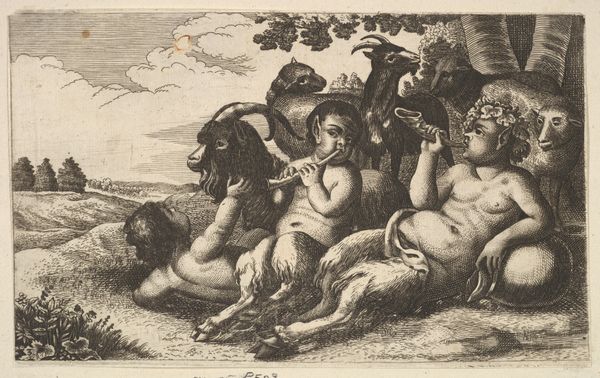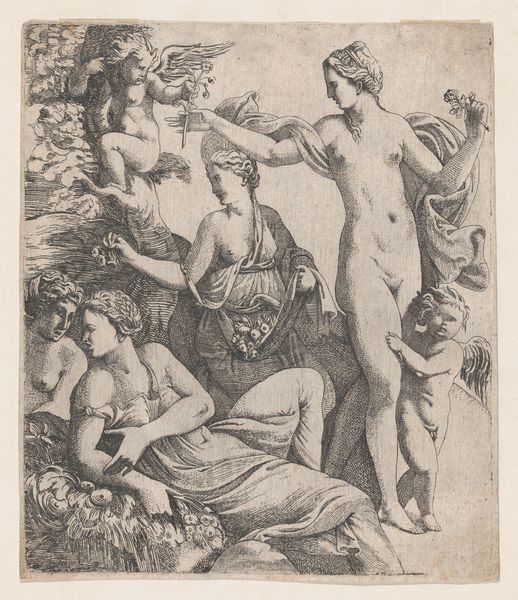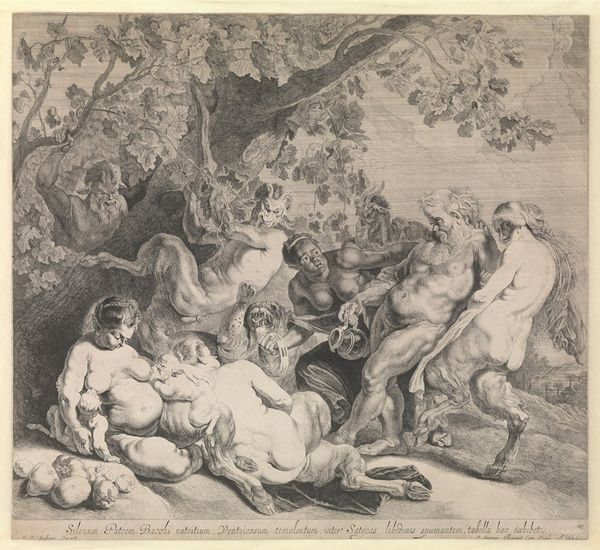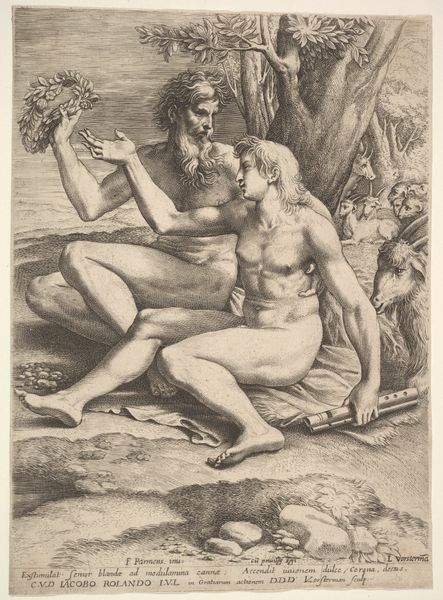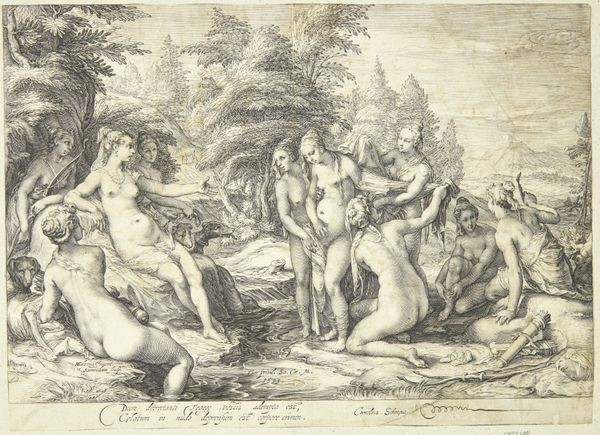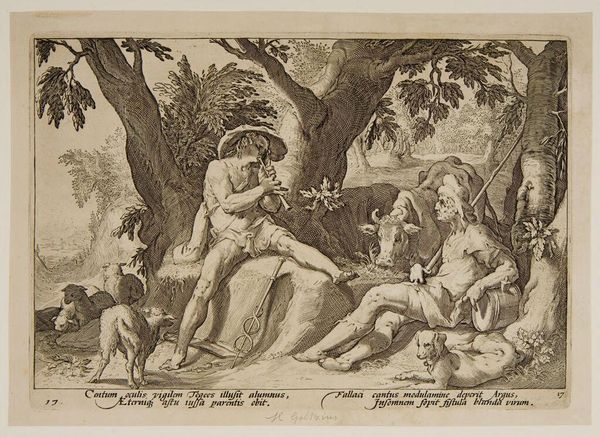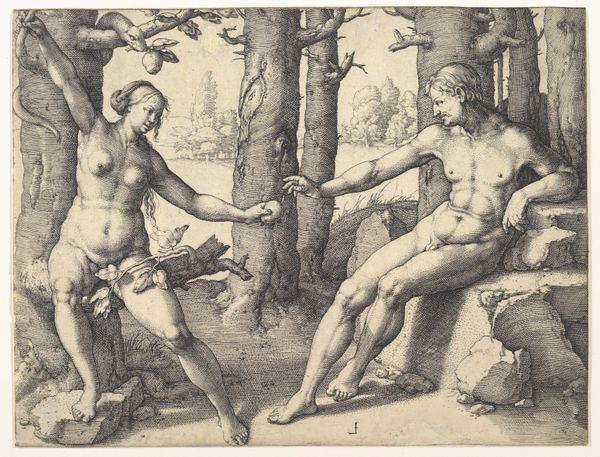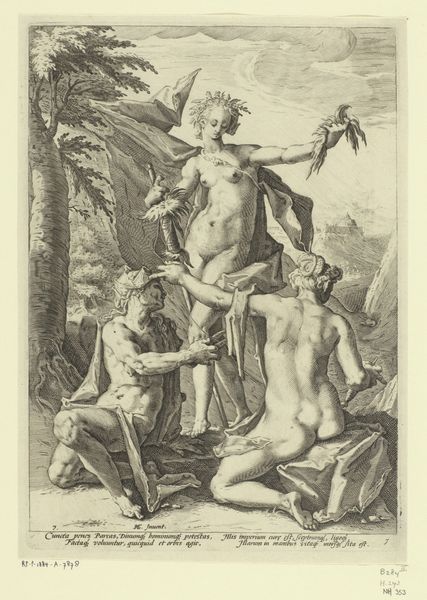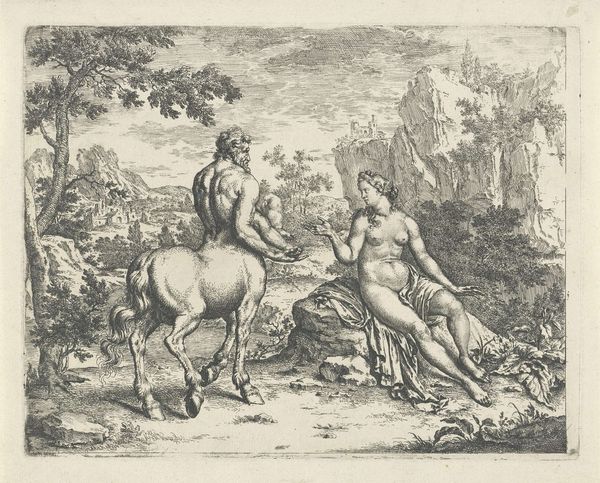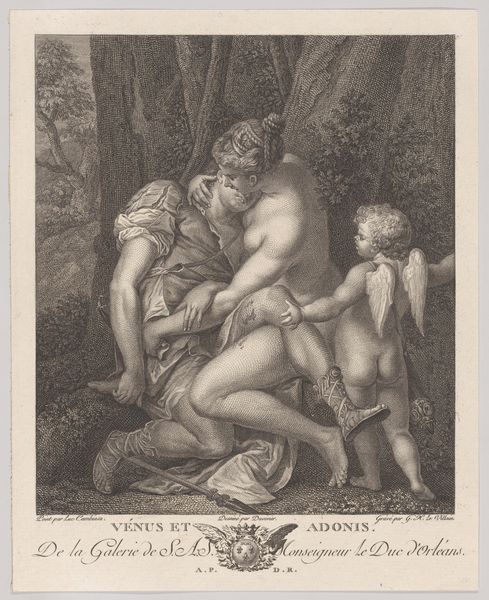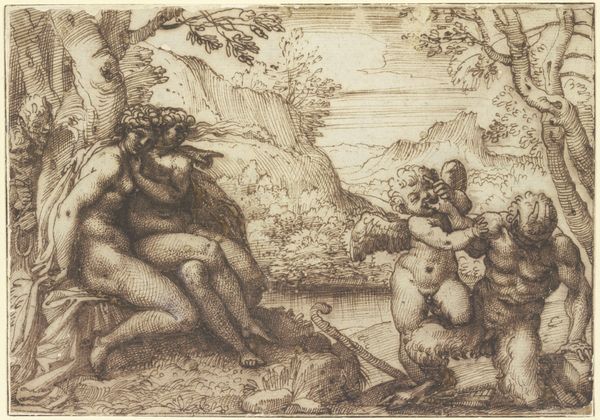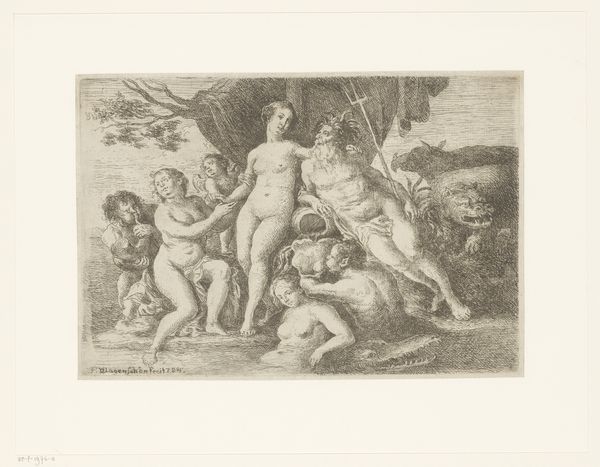
drawing, print, engraving
#
drawing
#
allegory
# print
#
mannerism
#
figuration
#
cupid
#
pencil drawing
#
line
#
history-painting
#
nude
#
engraving
Dimensions: Plate: 5 × 7 3/8 in. (12.7 × 18.8 cm) Sheet: 5 1/8 x 7 5/8 in. (13 x 19.3 cm)
Copyright: Public Domain
Editor: Here we have Agostino Carracci's engraving, "Omnia Vincit Amor," created in 1599. The figures—especially the seated women—appear very soft. What’s striking to me is how Cupid is actively engaged in the scene, wrestling with a satyr, while Venus is seated, looking on. What do you see in this piece? Curator: It's crucial to recognize the historical and social contexts that birthed this image. Consider the Mannerist style and the socio-political climate of the late 16th century. This engraving, "Love Conquers All," is not just a simple illustration, but a commentary on power dynamics, both carnal and social. Look at the assertive Cupid, almost violent in his conquest of the Satyr, while Venus sits passively— almost complicit. How does this make you reflect on contemporary social roles of male versus female? Editor: I didn't see that tension initially. I thought of Cupid and Venus as the focus of the piece, figures of mythological love in idyllic nature. I didn't quite view it as a "conquest," but more so a love that disrupts hierarchies. Curator: Exactly. And Carracci challenges the conventional hierarchies by placing Venus as a silent observer. It makes us question what love truly "conquers". Does it disrupt oppressive structures, or reinforce them by allowing power imbalances to exist, unchallenged? Consider also the gaze; who has it, and what does that imply? Editor: So you're suggesting we read this image not just as an allegory of love, but as a critique of how love and power intersect, specifically concerning gender? Curator: Precisely! Furthermore, consider the male gaze often associated with nudes such as the seated women; are they figures of love, of objectification, or both? This work operates on many layers, inviting us to critically examine its messages through lenses of gender, power, and desire. Editor: I now see it with totally fresh eyes! I’ll never look at another Cupid the same way again. Curator: Hopefully you now have a critical approach for analyzing classical and Renaissance imagery in contemporary contexts.
Comments
No comments
Be the first to comment and join the conversation on the ultimate creative platform.

